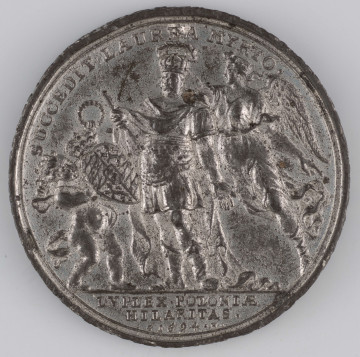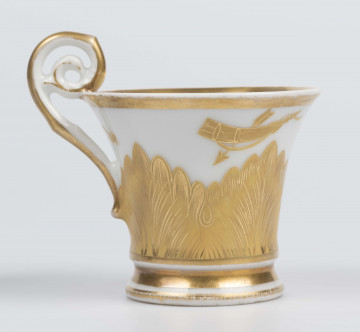
Hall wardrobe
around 1700
National Museum in Lublin
Part of the collection: English stoneware – Wedgwood
In 1759, Josiah Wedgwood founded a company to produce ceramics. He took care of every detail, the logistics and variety of production, but also the workers and the factory.
The Methodist preacher, John Wesley, visiting Wedgwood's workshop, noted that he met a young man who "planted flowers in the garden by his pottery factory. He also made the men employed in it wash their faces and hands and change their clothes after working at the clay. He is small in stature and has a limp, but his soul is close to God".
The factory owner liked to experiment with new varieties of ceramics. His aim was to obtain "tableware with a new look, covered with a perfect, glossy glaze, able to withstand sudden changes in temperature, easy to make and therefore cheap". These objectives were met and soon the improved, creamy material, perfect for utilitarian and decorative articles, gained popularity.
Fine faience vessels and coloured stoneware were decorated with antique, applied, relief motifs, usually white. Wedgwood relied on the opinion of ladies of the upper classes and even used their designs to create patterns for decorating the pottery. The figures depicted on the vessels were usually inspired by ancient mythology or history. In contrast to the nude depictions of characters known from antiquity, classical standards of decency demanded that the characters in the representations be carefully dressed. One owner of vessels with overly undressed figures wrote: "The bas-reliefs seem very interesting [ ...] if they were at least a little covered, if they were at least wrapped in some thin veil, we could freely show them in company without worrying that we would offend anyone's modesty".
Wedgwood took the recommendations of his discerning audience seriously and as a result his wares featured neatly clad figures. However, the approach was not always rigorous. An example is a cream milk jugn with a beautiful lion-shaped ear and an antique scene on the stem. It depicts two figures - Victoria, tightly covered by a folded robe, while the central figure of Fortune is dressed in a slightly falling gown showing her breasts, and Cupid, holding the walking lion, is completely naked!
Magdalena Norkowska
Author / creator
Dimensions
cały obiekt: width: 10 cm
Object type
dish
Technique
glaze
Material
stoneware
Creation time / dating
Creation / finding place
Owner
The National Museum in Lublin
Identification number
Location / status

around 1700
National Museum in Lublin

1694
National Museum in Lublin

1825 — 1830
National Museum in Lublin
DISCOVER this TOPIC
Castle Museum in Łańcut
DISCOVER this PATH
Educational path